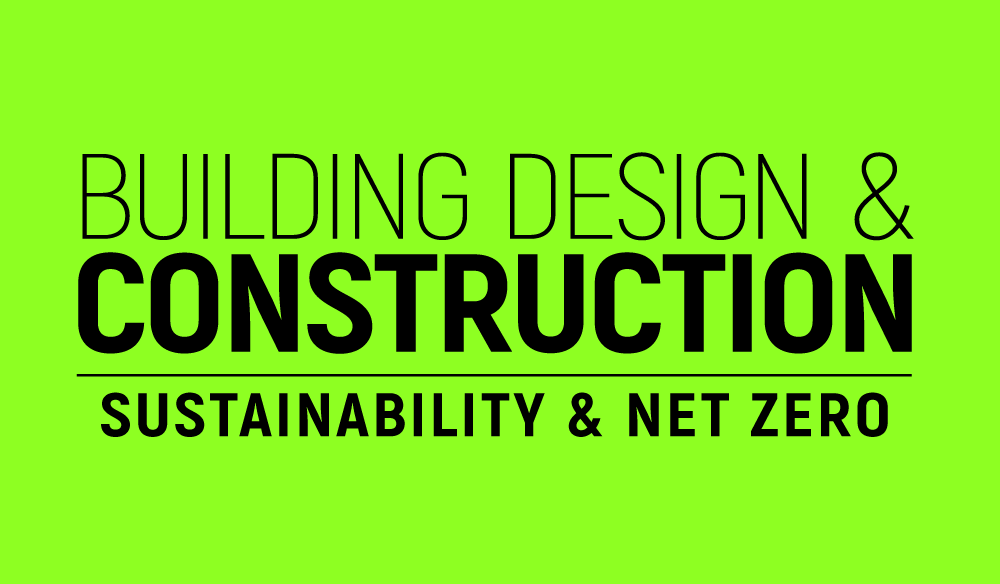One of Britain’s largest contributors to climate change is at a turning point. The construction industry, responsible for 18% of the country’s large particle pollution, is now taking steps towards sustainability. But how soon can the industry realistically achieve this?
Digitising paper processes, working towards ISO 14001 and 50001, along with reviewing the supply chain are all simple steps towards decarbonisation that construction firms can start today. There’s also an increased urgency now to deliver sustainability commitments across the sector.
Why Must Construction Firms Demonstrate Their Commitment to Sustainability?
In line with recent Net Zero targets set out by the UK government, construction firms now have a spotlight on them. As an industry that’s responsible for 40% of the UK’s carbon emissions, with 50m tonnes of CO2 produced every year, it’s immediately clear why the industry must commit to sustainable targets.
Before 2030, the industry is expected to reduce its current emissions by at least 68%. The government has also made it clear that these targets are mandatory, especially for businesses bidding on government contracts worth over £5 million. To avoid being pushed out, businesses must act now.
Construction firms must now completely overhaul their processes and review any practices, contractors, goods, materials, or procedures that work against these targets. This could mean a greater investment in alternative-fuelled work vans and machinery as well as enhanced pressures on subcontractors to meet requirements.
What Steps Can Construction Businesses Follow to Improve Sustainability?
- Work to ISO 14001 and ISO 50001
For businesses aspiring to those high-ticket government contracts, they’ll need to highlight their dedication to reducing carbon emissions. Construction firms can evidence and demonstrate their sustainability commitments by being accredited with ISO 14001 and ISO 50001. Those working towards ISO 14001 must outline carbon reduction targets for their organisation and determine a means to measure it.
There’s no obligation for firms to become net zero immediately, but working towards an international standard solidifies the business’s commitment to sustainability. Likewise, ISO 50001 shows how firms are addressing their impact on the planet and resources.
- Innovations in Green Building Materials
Green building materials are a vital component when it comes to sustainable construction and have been available for some time but these key targets will make green materials more widely used. Such materials, like recycled steel and low-VOC paints, offer numerous advantages for firms looking to reduce their environmental impact. For example, utilising recycled steel and concrete decreases the need for a resource-intensive manufacturing process to create them from new. Similarly, low-VOC paints are designed to promote a much healthier indoor air quality.
Through sustainability measures in the industry, it should also make green building materials a sought-after product, with many choosing to use recycled or long-lasting materials over brand-new ones. What’s more, by 2033, the green building materials market is expected to grow to over £700 billion worldwide, leading to more innovative and recyclable materials on offer.
- Energy-Efficient Design
As part of the construction process, energy-efficient designs can be established from the drawing stage. Thanks to BIM (Building Information Modelling) software, architects and engineers can completely visualise how a build will look and where greater energy efficiencies can be adopted. Much earlier on in a development project, expectations can be set for sustainability.
- Optimised Supply Chain
The emissions produced by subcontractors, delivery of goods and import materials all count towards a construction firm’s total emissions. That’s why optimising the supply chain can immediately offer some reduction when it comes to greenhouse gas emissions. Contractors and subcontractors may also be producing their emissions reports in a bid to remain an attractive choice for projects.
Certain suppliers might use alternative-fuelled vehicles or follow more energy-efficient routes to complete deliveries. Likewise, for smaller projects, it could be more beneficial to source materials, services and goods within a local area, almost eradicating long delivery routes.
- Review of Internal Processes
Leaving a physical paper trail behind can negatively impact emissions figures. Where possible, digitising certain paper-based procedures, such as goods received notes and invoicing, could work in favour of firms committed to reducing their greenhouse gas emissions. In this case, using software, like a construction ERP system, can aid the process. Not only does it offer a futureproof solution for businesses needing to adapt quickly, but it also means productivity and efficiencies can be boosted too.
- Switch to Renewable Energy
Transitioning to renewable energy is another way construction businesses can reduce their carbon emissions. Using solar, wind and geothermal power, construction projects can significantly reduce their reliance on fossil fuels, including gas, further demonstrating their commitment to the planet. Choosing renewable energy as part of an overall business strategy could also make firms more attractive for hire during the tender process.
Crossing the Finish Line: How Construction Firms Can Prepare for Strict Sustainability Measures
From working towards ISO certifications to optimising the supply chain, there are plenty of opportunities for firms to invest in their business whilst exploring more sustainable pathways. With imposing deadlines for both 2030 and 2050, imminent action is required. If the industry is to reduce 68% of emissions by 2030 and 100% of emissions by 2050, it’s going to be a monumental task but one that could see businesses profit in the long run.
Building, Design & Construction Magazine | The Choice of Industry Professionals





